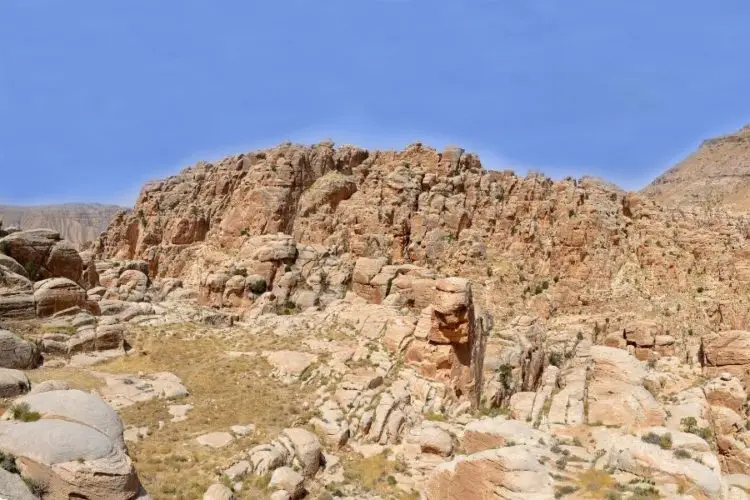Some scholars believe that the stories of Nippur and Nineveh share many similarities. The two cities were holy, but at one point lost God’s favor before later on regaining it. Nippur and Nineveh were also home to important leaders and temples. Also, in both stories, the citizens of each city protested and were eventually won over by their leaders won.
The Story of Nippur
Nippur, also known as Enlil City, was an old Sumerian city. Enlil, a Sumerian god, held his seat of worship in Nippur. Enlil was the God of wind and was answerable to An alone. Nippur was situated in now what is modern day Nuffar. Since Enki’s shrine could be found in Nippur, the city was considered a sacred place. There was also a major cult center in the city for Ninurta, also known as the Lord of Urta and the god of springtime thunder and rainstorms.

The cult center was known as the Eshumesha temple. According to the chronicle of Tummal, an ancient ruler of Kish, known as Enmebaragesi, is the one who initially built this temple. Enmebaragesi also had influence over Nippur.
Several other Sumerian rulers held ceremonies at the Eshumesha temple. Some of them included Emmebaragesi’s sons Mesannepada and Meskiagnun; Gilgamesh and his son Nungal from Uruk; and Nanni and his son Meskiagnun from Ur. Ceremonies also went on during the Ur III period. They were conducted by Ur-Nammu, who was from Ur, and as well as by the Ur high priest, Enmegalana.
Writings by Lugal-Zage-Si, a king in Uruk, and Lugal-kigub-nidudu, a king in Ur, among other rulers, show how important maintaining the temple was, an also gave it a sense of legitimacy. The temple was used to give offerings.
Towards the end of the third millennium, the rulers of Akkad conquered Nippur and settled there with Naram-Sin, Rimush, and Sargon. Naram-Sin reconstructed the city walls and the temple, and the debris that accumulated marked the ancient site.
Nippur did not often have an official ruler, but one of those rare times were caught in writing on a tablet that showed the rebellion of some Mesopotamian citizens against Naram-Sin. Naram-Sin, however, won over the cities that were rebelling and continued being their leader. It took nine battles for him to conquer these cities.
According to the Weidner tablet, the empire of Akkad fell as divine punishment; Sargon had attempted to transfer the status of “holy city” from Nippur to Babylon. Akkad became occupied by a neo-Sumerian empire, and Naram-Sin took over the temples that had been built by Ur-Nammu.
The story of Nippur is quite long; however, most importantly, the process of building the temple was continued by the dynasties that took over Isin and Ur. At some point, the temple suffered severe damage during the Elamites invasion, but it was later reconstructed.
The Story of Nineveh
In the Bible, the story of Nineveh is found in the book of Genesis. According to the Bible, Nineveh was built by Ashur and found in Assyria. It was the main headquarters of the Assyrian Empire. Several prominent people came from this city; for example, King Sennacherib, who was the king of Assyria when King Hezekiah was in power and when Judean prophet Isaiah was still alive.
According to the Hebrew scriptures, Sennacherib was killed by his two sons in Nineveh; they later ran away to the vassal land of Urartu. The better part of prophet Nahum’s book talks about the condemnation against Nineveh. The destruction of the city had been foretold. Its desolation was to be strange, unexpected, and tragic.
The Bible says that God who was going to destroy Nineveh in fulfillment of the prophecy of Isaiah. The Prophet Zephaniah also predicted the destruction of Nineveh, together with the fall of the capital.
During that period, Nineveh was home to over 120,000 people and a three-day journey from the Assyrian empire. Nineveh was surrounded by three cities: Calah, Rehoboth, and Resen. According to the book of Noah, God felt that the Ninevites were extremely wicked and deserved to be destroyed.
However, he sent Jonah to preach to the people of Nineveh as well as those residing in the surrounding cities of Resen, Calah, and Rehoboth. When God called on Jonah to go and preach to the people, he was not comfortable with the idea; the Ninevites and Israelites were great enemies. Jonah, therefore, boarded a ship that was going to Tarshish, which was in the opposite direction. God then sent a massive storm, and the ship nearly capsized, and throwing some of its occupants, including Jonah, into the water. As soon as he was thrown, the storm stopped, and God sent a whale to swallow Jonah. While in the creature’s stomach, Jonah praised God and repented. He stayed in the whale’s belly for three days, after which he was deposited in Nineveh. There he preached for 40 days.
People paid attention to Jonah, and to show their remorse for their sins, they fasted and repented. As a result, God changed his mind about destroying the Ninevites.
When Noah objected to God’s decision because the Ninevites were enemies, God said that he had spared them for the sake of those people who could not discern what was right and what was wrong, and also for the sake of the animals since they were innocent.
Similarities
In both stories, Nineveh and Nippur were held in high esteem. In the Sumerian religion, Enlil had a seat in Nippur, and the city was also considered sacred for multiple reasons. On top of that, Nippur was home to several prominent leaders, such as Aga of Kish, Meskiagnun and his father, and Nungar and his father, Gilgamesh. Similarly, Nineveh was the main headquarters of the Assyrian Empire. A good number of prominent people also came from this city, such as King Sennacherib, the king of Assyria.
In the Sumerian religion, some Mesopotamian cities rebelled against Naram-Sin. Naram-Sin, however, won them over and continued as their leader. In the Bible, it could be said that the people of Nineveh had rebelled against God by being wicked. God was not happy and decided to destroy them, but before doing so, he gave them a chance to change. God sent Jonah to preach to them. When Jonah preached, they listened, repented, and changed their ways.
Conclusion
As discussed above, there are a number of similarities between the cities of Nippur and Nineveh. Each are highly sacred and highly respected places. In addition, the people in both stories are rebellious – in Nippur, against Naram-Sin, and in Nineveh, against God – but their minds are eventually changed by their respective leaders.

